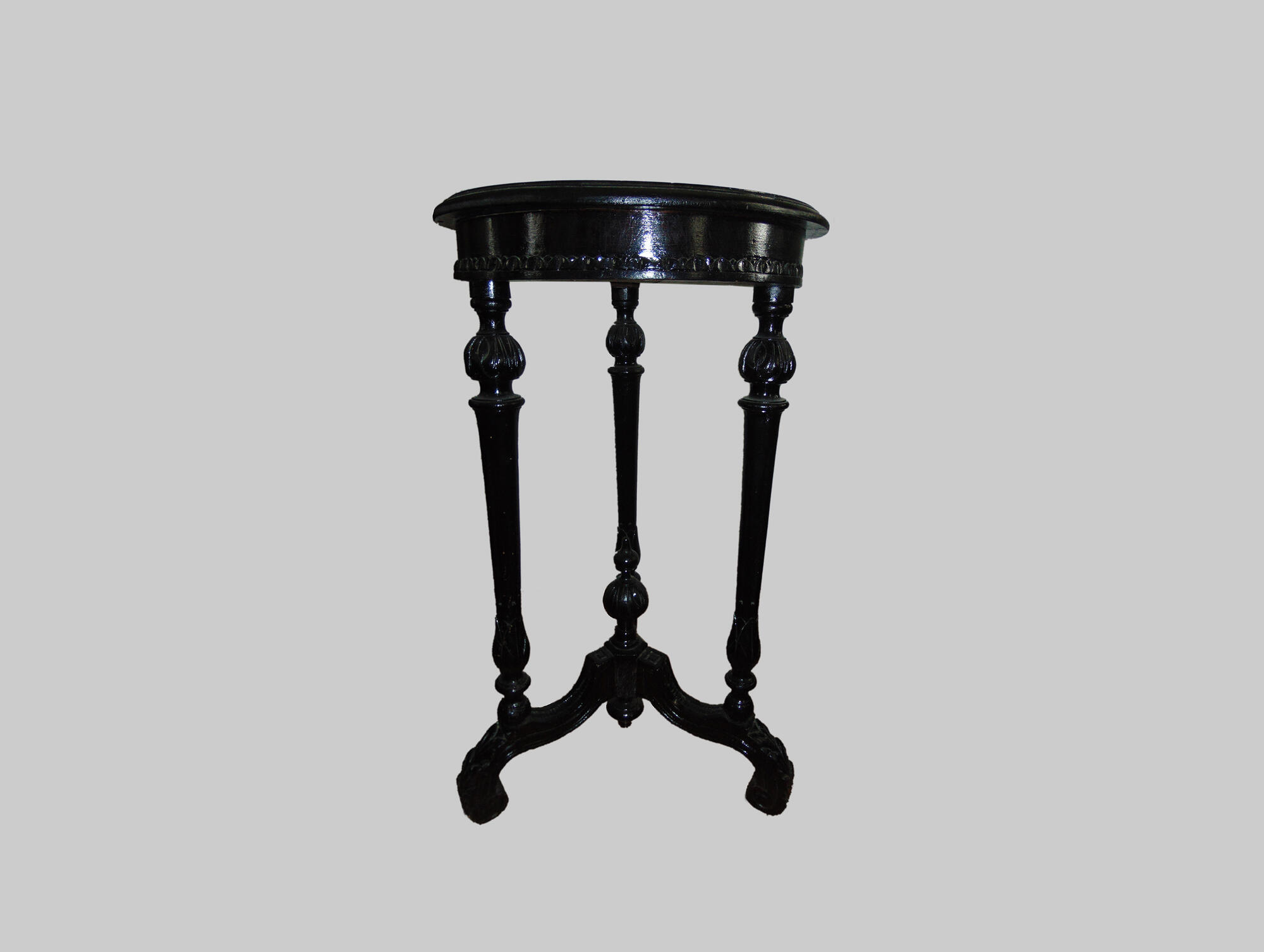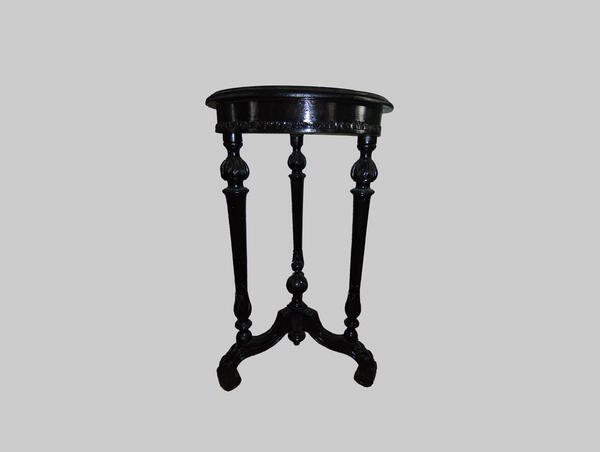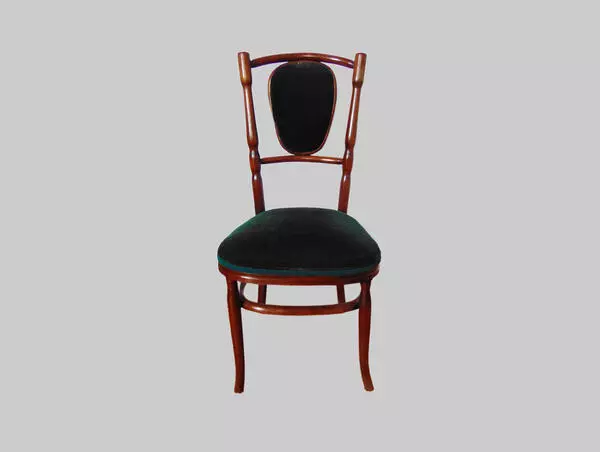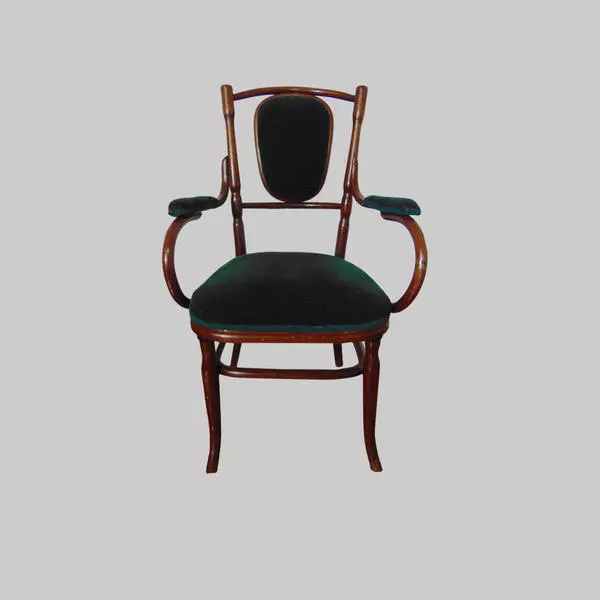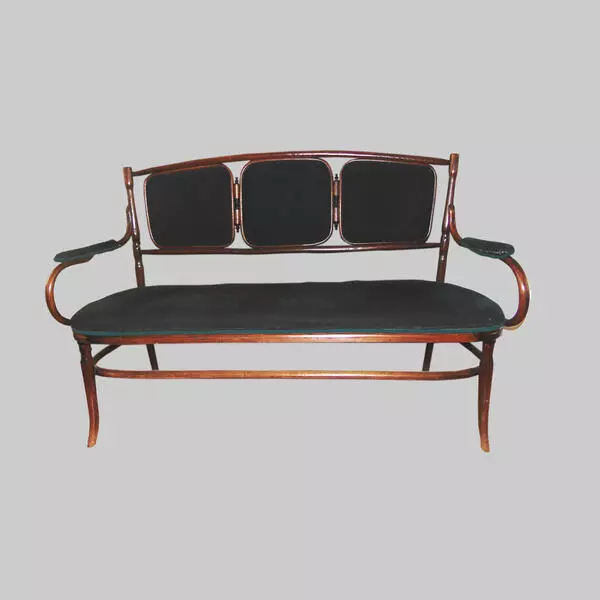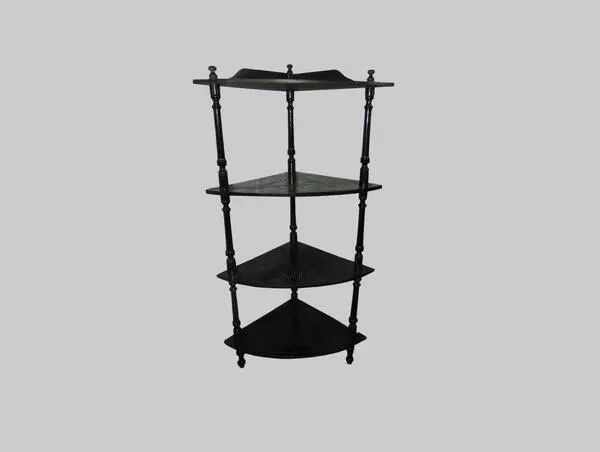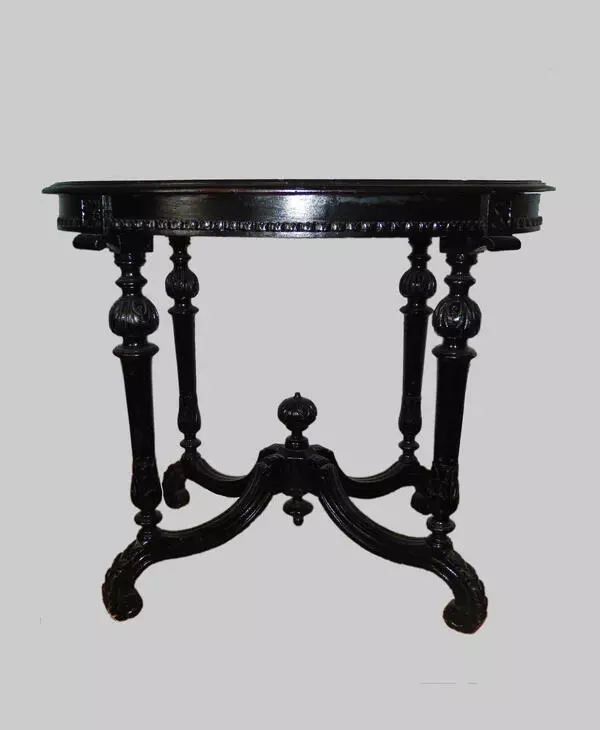In the middle of the 19th century, German and Austrian cabinetmaker and master furniture designer Michael Thonet opened a factory in Europe producing original designer furniture made of bent wood. This furniture combined simplicity, durability and elegant appearance and quickly became very popular in the Russian noble life. Since then, Thonet’s furniture has been referred to either by its country of production — Vienna furniture — or by the name of the manufacturer — in the style of Thonet.
In the “Large sitting room” of the Aksakov Museum there are several exhibits produced at the Thonet factory, one of which is a black wooden stand in the form of a miniature table on three curved legs. Such stands were usually used to adorn living rooms, and often had small objects, used purely for decoration, such as vases with flowers or photo frames, placed on them. Occasionally, people could also drink coffee behind such stands, or put papers on them during business negotiations.
Most often, the stands were decorated with an openwork napkin or covered with a tablecloth in order to create a welcoming and authentic atmosphere. In particular, the stand presented at the exposition of the Aksakov Museum is also decorated with an openwork. Having a small stand like this in a living room in the 19th century marked the owner a person of good taste. At that time, only the wealthy noblemen could afford a real carved table stand from by a master cabinetmaker, due to the fact that mass production of such interior items took a long time to get established.
Thonet registered a patent for products made of bent wood in 1842, in Vienna. In order to become more flexible and eventually form the exquisite design of Thonet’s furniture, the wood was soaked in boiling water or steamed with water vapor, and then bent and fixed with the help of molds, after which it retained its new shape. At different times, sledges, skis, boats, barrels and other things were already being made of bent wood, but it was Thonet who adapted this technique for manufacturing furniture.
Thonet started out with the ordinary for early 19th century solid wood products, which were produced by his first furniture factory in the German city of Boppard, opened in 1819. He undertook the first experiments on production of strong and light structures using bending and bonding layers of plywood only after eleven years. At one of the industrial exhibitions, an unusual wooden chair by Thonet drew the attention of Austrian Chancellor Prince Klemens von Metternich, who offered the master to move to Vienna. After a little while, Thonet agreed to his proposal.
In the “Large sitting room” of the Aksakov Museum there are several exhibits produced at the Thonet factory, one of which is a black wooden stand in the form of a miniature table on three curved legs. Such stands were usually used to adorn living rooms, and often had small objects, used purely for decoration, such as vases with flowers or photo frames, placed on them. Occasionally, people could also drink coffee behind such stands, or put papers on them during business negotiations.
Most often, the stands were decorated with an openwork napkin or covered with a tablecloth in order to create a welcoming and authentic atmosphere. In particular, the stand presented at the exposition of the Aksakov Museum is also decorated with an openwork. Having a small stand like this in a living room in the 19th century marked the owner a person of good taste. At that time, only the wealthy noblemen could afford a real carved table stand from by a master cabinetmaker, due to the fact that mass production of such interior items took a long time to get established.
Thonet registered a patent for products made of bent wood in 1842, in Vienna. In order to become more flexible and eventually form the exquisite design of Thonet’s furniture, the wood was soaked in boiling water or steamed with water vapor, and then bent and fixed with the help of molds, after which it retained its new shape. At different times, sledges, skis, boats, barrels and other things were already being made of bent wood, but it was Thonet who adapted this technique for manufacturing furniture.
Thonet started out with the ordinary for early 19th century solid wood products, which were produced by his first furniture factory in the German city of Boppard, opened in 1819. He undertook the first experiments on production of strong and light structures using bending and bonding layers of plywood only after eleven years. At one of the industrial exhibitions, an unusual wooden chair by Thonet drew the attention of Austrian Chancellor Prince Klemens von Metternich, who offered the master to move to Vienna. After a little while, Thonet agreed to his proposal.
